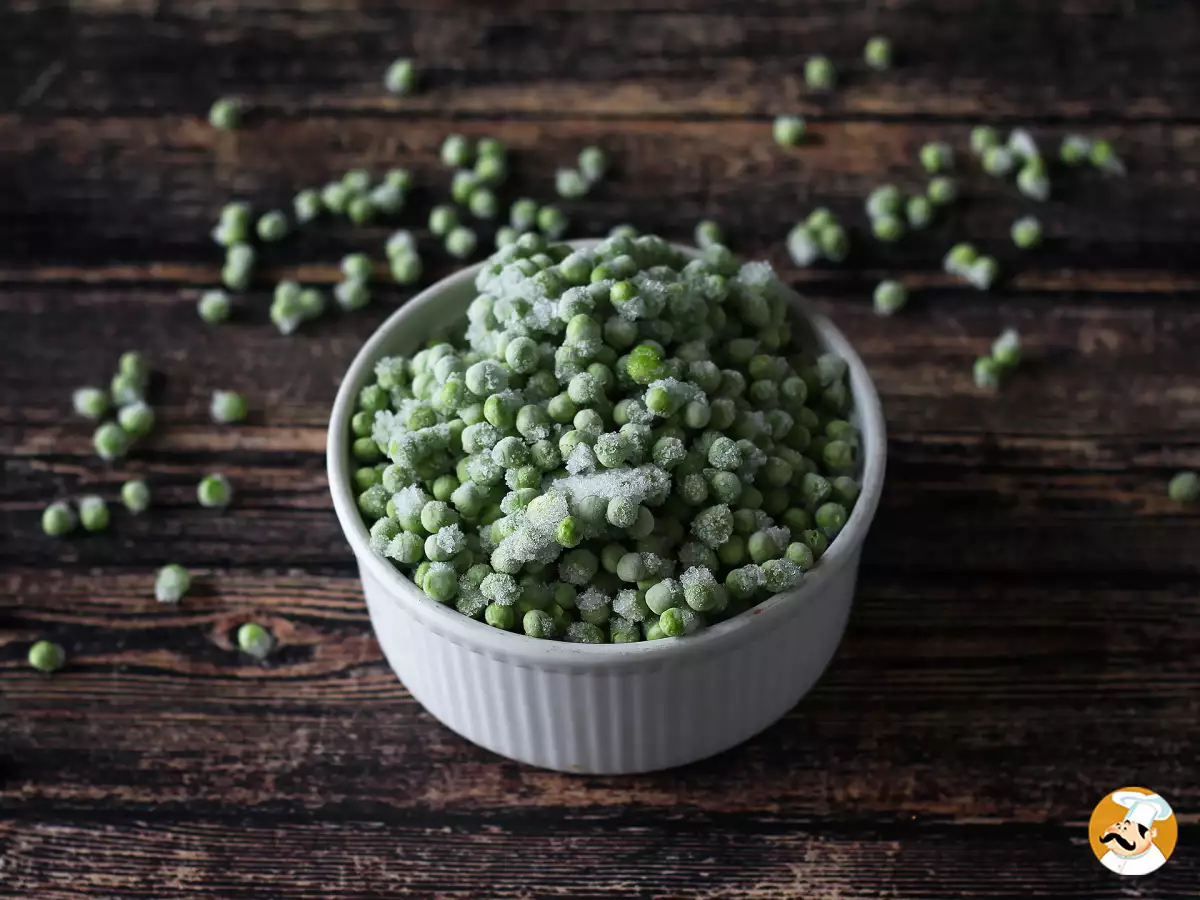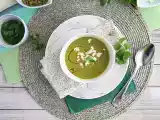What is the best way to cook frozen peas?

Often underestimated, frozen peas prove to be an excellent alternative to fresh peas, offering numerous advantages in terms of convenience, nutrition, and sustainability.
First of all, quick freezing, done immediately after harvesting, allows oxidative processes to be blocked and the peas' nutritional properties to be best preserved. Vitamins, minerals and fiber remain intact, ensuring a healthy and nutritious food. In addition, they are harvested at peak ripeness, when they are sweetest and most flavorful.
Another advantage of frozen peas is their convenience: they are always ready to use and keep for a long time in the freezer without losing flavor, color or texture. This makes them ideal for quickly preparing an appetizer, a first course, a side dish, a main course, or to enrich a soup.
But what are the best ways to cook frozen peas? In this article, we will explore the various ways to cook them, analyzing techniques, timing and tricks to enhance their taste and texture in each preparation.
1. Boiling
Procedure: Bring a pot of lightly salted water to a boil. Add frozen peas and cook for 2-4 minutes, until tender but still bright green. Drain immediately when ready.
What are the benefits of boiling frozen peas?
- Quick and easy.
- Keeps peas tender and brightly colored.
- Ideal for preparations that require soft peas, such as purees or soups.
What are the disadvantages of boiling frozen peas?
- May cause a slight loss of nutrients, especially water-soluble vitamins.
- Risk of darkening the peas, making them too soft
2. Pan cooking
Procedure: Heat oil (or butter) in a frying pan. Add frozen peas and cook over medium heat for about 5-7 minutes, stirring often.
What are the benefits of cooking frozen peas in a skillet?
- Peas gain a richer flavor by cooking directly with seasonings.
- Ideal for adding other ingredients such as onion, bacon or spices.
- Quick and convenient cooking without the need for pre-boiling.
What are the advantages of cooking frozen peas in a pan?
- Risk of burning peas if not stirred regularly.
- Requires fat for cooking, which may increase the calorie content.
3. Baking
Procedure: Preheat the oven to 390°F (200°C). Place peas on a baking sheet with baking paper, season with oil, salt and spices to taste. Bake for 10-15 minutes, stirring halfway through cooking, until peas are crispy.
What are the advantages of cooking frozen peas in the oven?
- Excellent method for getting crispy and flavorful peas.
- Allows you to add spices and flavorings while cooking for more complex flavor.
What are the disadvantages of cooking frozen peas in the oven?
- Longer cooking times than other techniques.
- Peas may dry out if cooking is not carefully controlled.
4. Microwave cooking
Procedure: Place frozen peas in microwave-safe container. Add 1-2 tablespoons of water and cover with a lid. Cook on highest power for 3-4 minutes, stirring halfway through cooking. Drain any excess water.
What are the advantages of cooking frozen peas in the microwave?
- Extremely quick and convenient method, ideal for small quantities.
- Does not require the use of additional fat.
- Minimizes nutrient loss due to the short cooking time.
What are the disadvantages of cooking frozen peas in the microwave?
- Peas can be uneven in cooking.
- It can be difficult to achieve the perfect texture without experimenting with timing.
5. Steaming
Procedure: Fill a pot with about 2-3 cm of water and bring it to a boil. Place the frozen peas in a steamer basket. Place the basket on top of the pot, cover with a lid and cook for 5-7 minutes.
What are the benefits of steaming frozen peas?
- Maintains the bright green color and crisp texture of peas.
- Preserves vitamins and nutrients better than boiling.
- Requires very little seasoning to enhance the natural flavor.
What are the benefits of steaming frozen peas?
- Requires a steaming basket.
- May take a little longer than other techniques.

Vegetarian verrines: pea cream, parmesan crumble and mascarpone cream

Pea dip, perfect with a creamy burrata !

Quick cold pea soup
 Daniele Mainieri
Daniele Mainieri
Comments